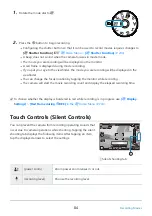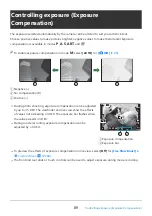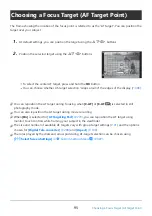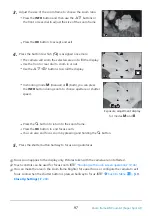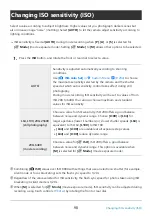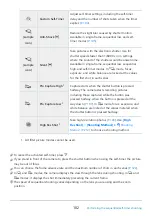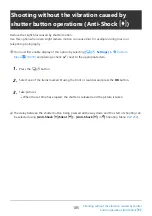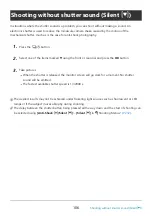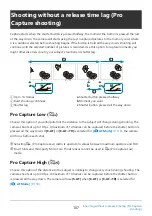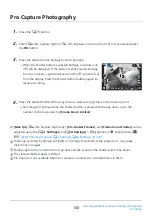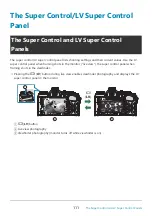
Changing ISO sensitivity (ISO)
Select a value according to subject brightness. Higher values let you photograph darker scenes but
also increase image “noise” (mottling). Select [AUTO] to let the camera adjust sensitivity according to
lighting conditions.
ISO sensitivity is fixed at [AUTO] during movie recording when [P], [A], or [S] is selected for
[
n
Mode] (movie exposure mode). Setting [
n
Mode] to [M] allows other options to be selected.
Press the ISO button, and rotate the front or rear dial to select a value.
AUTO
Sensitivity is adjusted automatically according to shooting
conditions.
Use
to choose
the maximum sensitivity selected by the camera and the shutter
speed at which auto sensitivity control takes effect during still
photography.
During movie recording, ISO sensitivity will be set to values of from
ISO 200 to 6400. You can also choose maximum and standard
values for ISO sensitivity.
L64, L100, 200–25600
(still photography)
Choose a value for ISO sensitivity. ISO 200 offers a good balance
between noise and dynamic range. Choose [L100] or [L64] for
larger apertures (lower f-numbers) or slower shutter speeds. [L64] is
equivalent to ISO 64, [L100] to ISO 100.
[L64] and [L100] are available at all exposure step values.
[L64] and [L100] reduce dynamic range.
200–6400
(movie recording)
Choose a value for [
n
ISO]. ISO 200 offers a good balance
between noise and dynamic range. This option is available when
[M] is selected for [
n
Mode] (movie exposure mode).
Combining [
K
ISO] values over ISO 8000 with settings that use an electronic shutter (for example,
silent mode or focus bracketing) sets the flash sync speed to 1/20 s.
Regardless of the value selected for ISO sensitivity, the flash sync speed for photos taken using ISO
bracketing in silent mode is 1/20 s.
When [M] is selected for [
n
Mode] (movie exposure mode), ISO sensitivity can be adjusted during
recording using touch controls (
) or by rotating the front or rear dial.
98
Changing ISO sensitivity (ISO)
1.
C
C
C

